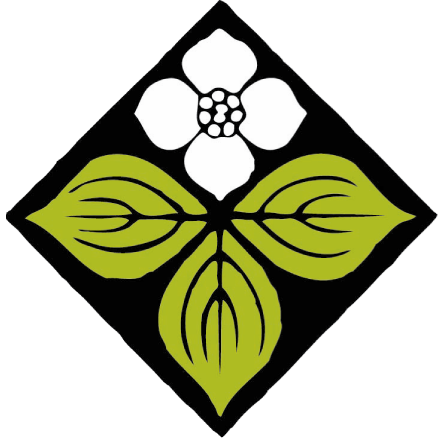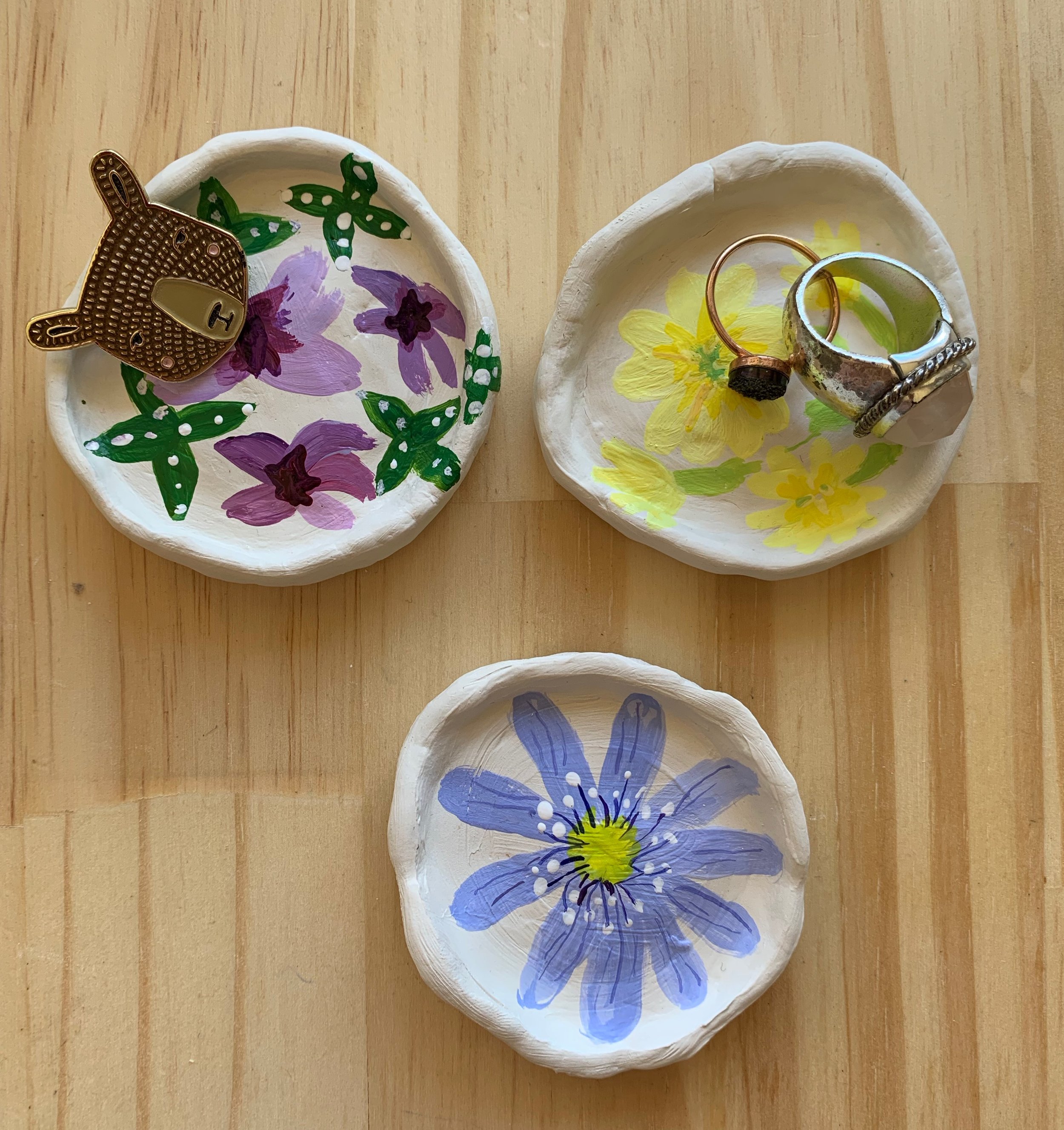Clay Flower Dish
It is wonderful to see the first few flowers of spring popping through the forest ground, leaves, and Garden beds. Some of the first blooms to arrive are the Anemones, Primulas and Saxifrage. To pay homage to these early blooms and to get your hands ready to work all that soil let’s try clay hand building to make a painted Anemone flower dish. (These also make great Mother’s Day presents.)
Use air drying clay and begin by rolling a small amount into a ball.
Press your thumb into the middle of the ball of clay and push down but stop just before the bottom.
Once you have an indent in your ball of clay use your thumb and forefinger to pinch the sides of the clay. As you pinch the clay pull out a little bit on the clay to open it up.
Keep pinching the sides of your clay until you get a wide flat disc or circle with raised edges.
You can use your forefinger to push on the inside of the circle and on the wall on the outside of the circle to make a raised lip or edge on your dish.
Use a small cup of water and dip your finger in the water and then run your finger on the clay to smooth any cracks or rough areas. Don’t use too much water or it will loosen up the clay into slip.
Use a wooden tool or a pencil to write your initials on the bottom of your clay.
Let your clay air dry overnight on a piece of wood. This will keep the clay from sticking to the surface.
Once the clay is dry use acrylic paint to paint an anemone or windflower on the clay. (You could also paint a Primula or Saxifrage or flower of your choice). Check the ‘what’s blooming?’ link under the ‘horticulture’ tab on the alaskabg.org website for images of flowers in bloom or walk around the Garden and take some pictures of your own).
To paint the Anemone transsilvanica mix up some ultramarine blue and white to make a light blue. Add a little Alizarin Crimson or red to make a light bluish-purple color.
Paint the petals on your clay. Note that the Anemone transsilvanica has a
Next use yellow to paint the center of the flower. If you add a little green, it will make a nice yellow green center to your Anemone.
Use white acrylic paint and a small brush to dab dots of white on top of the petals around the center of your flower called the anther.
Use ultramarine blue and a thin liner brush to create thin lines in the center of the flower called the filament. Let the paint dry and then paint a thin layer of Mod Podge on each side of the clay dish to help seal the paint and clay. (These are not meant for food use, but would make a great jewelry or coin dish).
Anemone transsilvanica or Liverleaf is a perennial pale blueish purple flower in the genus Anemone which belongs to the family of the Ranunculaceae or Buttercup family.
Primula elatior or Oxlip Primrose is an herbaceous perennial that is pale yellow with a darker yellow center. The genus name Primula means “little earliest one”.
Saxifrage oppositifolia ‘Florissa” or Purple Mountain Saxifrage is a small low growing flower with purple or lilac petals. The leaves are opposite in four rows.

